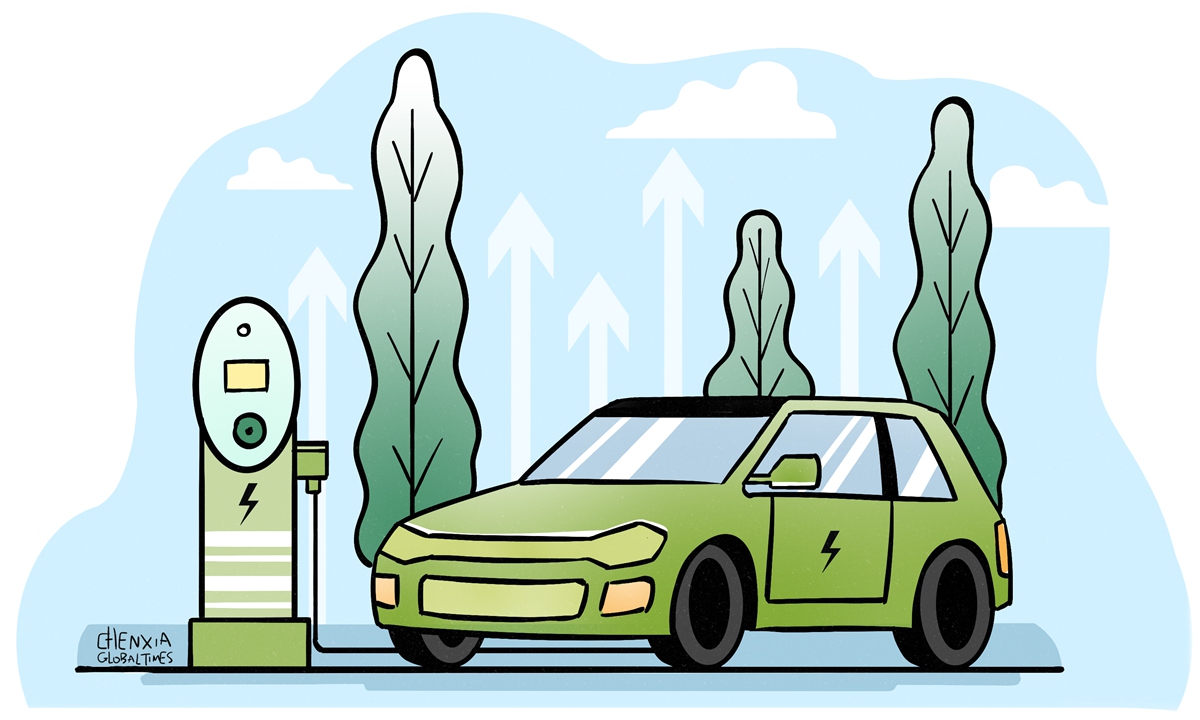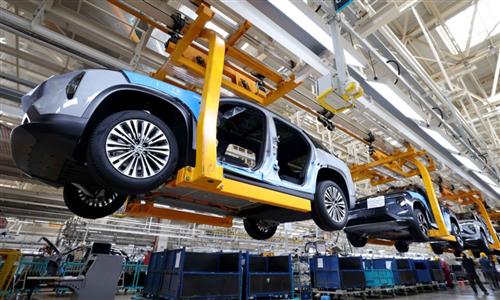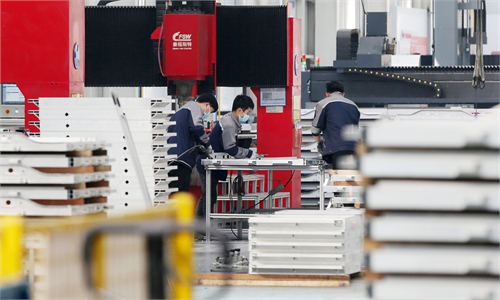
Illustration: Chen Xia/Global Times
As a GAC Aion Hyper GT rolled off the production line in Guangzhou, South China's Guangdong Province on Monday, China's 20 millionth new-energy vehicle (NEV) was born, creating a remarkable milestone for the country's NEV sector, news portal stcn.com reported.China's NEV industry started from scratch and has gone through many hardships before Chinese NEV brands could win worldwide recognition. Industrial insiders need to determine what the next direction for China's NEV sector is likely to be. Monday's ceremony, which was attended by representatives from many auto manufacturers, may offer clues to help answer the question. The record-setting model is the Hyper GT, a coupe aimed at the mid- to high-end market. With clever aerodynamic tricks, Hyper GT has been considered as the production vehicle with the least wind resistance in the world.
According to data released by the China Passenger Car Association, the proportion of sales of NEV worth over 400,000 yuan ($55,428) in the Chinese domestic market has increased from 1.2 percent in 2017 to 3.4 percent in 2023. As for sales at prices ranging from 200,000 to 300,000 yuan, the proportion has increased from 8.5 percent to 17.5 percent over the same period. Various signs indicate that the mid- to high-end market has enormous development potential, and may represent the future development direction.
Keeping up with China's changing electric car market is challenging. Chinese NEV brands should win over consumers in the mid- to high-end market and increase their competitiveness against foreign automakers such as Tesla.
The electric car market is increasingly competitive. Currently, amid a global transition to clean energy technologies, the global auto manufacturing industry is undergoing a rapid transition from reliance on internal combustion engines (ICEs) to battery electric vehicles (EVs). China's NEV industry has developed rapidly over recent years, but it is also facing the headwinds of trade protectionism and economic suppression.
Against this backdrop, a wide range of critical minerals - including lithium - have assumed strategic importance because of their role in electric-vehicle technology. The US and some other Western countries in December 2022 announced an alliance to produce and buy critical minerals from countries with "stronger environmental and labor standards," Reuters reported, saying that the alliance is expected to "reduce business with market leader China."
So-called environmental and labor standards are just an excuse. The best explanation to such alliances is that American economic hegemony won't allow other countries' enterprises capable of challenging US' economic authority, especially in emerging NEV sector which represents the future of the global auto industry.
Reuters reported on Monday that Australia's exports of new-energy metals are expected to rise in value above those of thermal coal, the polluting fuel that has been the mainstay of electricity generation across much of Asia. A clean energy transformation is moving faster than expected. In this process, the US may pick up its pace in strengthening relations with allies and try to reduce China's role in their critical minerals supply chains, exerting more pressure on China's NEV industry.
How should China respond to it? The NEV sector has its unique advantages in battling against strong headwinds. First, as the world's biggest energy vehicle (EV) producer, China has some key advantages for manufacturing. Second, China remains the world's largest EV market, with media reports saying 59 percent of EVs sold in the Chinese market. Now, what China's NEV industry should do is to further strengthen technical upgrading and innovation, seeking to gain more advantages in the mid- to high-end market. Chinese auto makers seem to have recognized that this issue is important to their future development.
China is thinking of how to develop its NEV sector, while some US politicians are thinking of how to contain China. It is clear whose plan is healthier and can be better implemented. After China's 20 millionth NEV rolled off the production line, the country's NEV industry will continue to develop. Chinese brands' performance in the mid- to high-end market will indicate their technological growth.
The author is a reporter with the Global Times. bizopinion@globaltimes.com.cn



